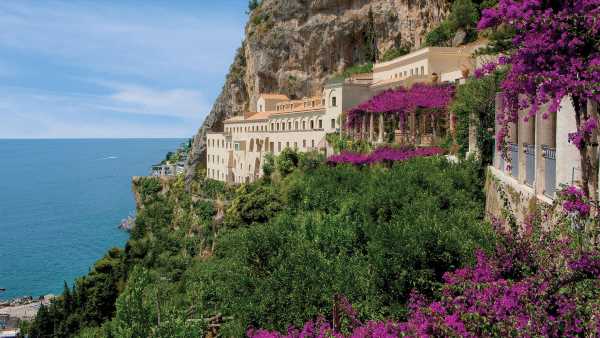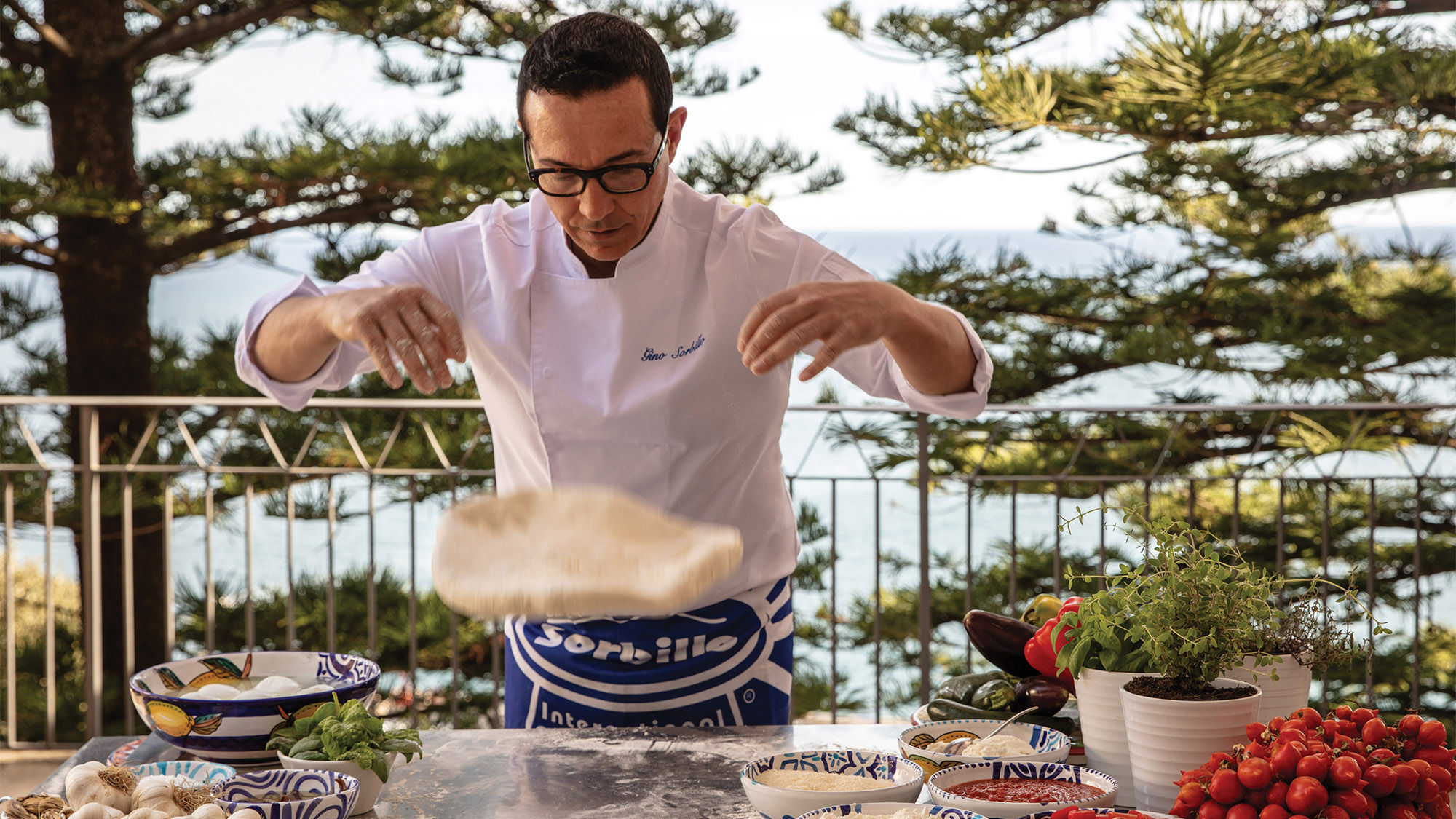
High atop the cliffside road from Pompeii to Amalfi, my driver, Gino, deftly maneuvered the Mercedes S-Class sedan into a narrow scenic overlook for a granita al limone pit stop. Not for the fainthearted, the vertiginous roads along the Amalfi Coast are notable for precipitous hairpin curves and daring drivers, usually Italian, and my gratitude was real as Gino negotiated the white-knuckle wonders of one of the world’s most spectacular corniche drives.
For centuries, the otherworldly allure of the Amalfi Coast has captivated artists and composers to the extent that this enchanted peninsula overlooking the Tyrrhenian Sea in southern Italy has become known as Costa Divina (or Divine Coast). And like all things divine, the vistas become ever more dramatic the higher you climb.
Built into the mountain high above the Gulf of Salerno, the Anantara Convento di Amalfi Grand Hotel traces its roots to the 13th century, when Christian ascetics settled into a cliffside cave. In the succeeding centuries, the site has been an abbey and a convent, a nautical institute and a 19th-century grand hotel that attracted upper-class travelers making their grand tour through Europe.
Designated a Unesco World Heritage Site in 1997, the Amalfi Coast thrives on tourism, yet the shoulder seasons from April to June and September and October offer an escape from the crowds and a more temperate climate for hiking and meditative walks. For years, monks marshaled their mules up the mountain to the convent.
Today, guests of Anantara Convento di Amalfi ascend from Amalfi Drive via a glass elevator to a cliffside terrace bursting with bougainvillea and the fragrance of the local lemon, sfusato Amalfitano. Far below, yachts and speedboats crisscross the water, painting the impossibly blue sea with the white streaks of their wake.
Signature experiences
The Sanskrit word anantara means “without end,” which is in keeping with Anantara’s mantra that “Life is a journey.” The Anantara Convento di Amalfi Grand Hotel offers numerous signature experiences, such as sailing excursions to Positano and Capri and sunset cruises with cocktails and canapes. Helicopter and driving tours are available to Ravello and the Greek ruins of Paestum as well as Pompeii and Herculaneum.
Closer to home, the hotel offers hikes to La Valle dei Mulini and Path of the Gods.
According to the hotel’s general manager, Giacomo Sarnataro, many guests find it difficult to leave the property, which is understandable given the landscaped gardens and pathways that lead to a cliffside infinity pool and an alfresco TechnoGym fitness club with panoramic views. To access the beach club at Lido Degli Artisti, guests take a five-minute boat ride along the coast to a private cove.
Equally tempting is a Spice Spoons cooking class with chef Claudio Lanuto, who teaches guests the art of cannelloni, or how to make authentic mozzarella or convento limoncello. I chose a pizza class under the tutelage of Gino Sorbillo, whose pizzerias have earned him the title Ambassador of Italian Pizza. One of Sorbillo’s acolytes taught me how to knead the dough correctly and to toss it into the air (without mishap), then how to eat it like an Italian (which every New Yorker knows, as well).
One of Anantara’s signature experiences is Dining by Design, which offers guests the opportunity for private dining with a butler in an exceptional locale such as the 13th-century cloisters or a candlelit dinner along the Monks’ Walk.
Equally indulgent, the breakfast buffet at Dei Cappuccini is a reminder that the Mediterranean diet is a misnomer and more like a feast. That said, it’s important to remember that there’s no such thing as gluttony while eating in Italy. For those Calvinists seeking post-prandial atonement, there are approximately 200 steps leading down into the town of Amalfi, where gelaterias beckon like sirens.
Gelato in hand and the monks in mind, I climbed the steps back to the hotel, where two chaise longues and a Jacuzzi called to me from the terrace of my suite. With vaulted ceilings and tiled floors, and toiletries by Acqua di Parma, the hotel’s rooms and suites are furnished with an ecclesiastical elegance befitting modern-day pilgrims who worship along the Amalfi Coast. Divinity has never seemed so attainable.
Source: Read Full Article











